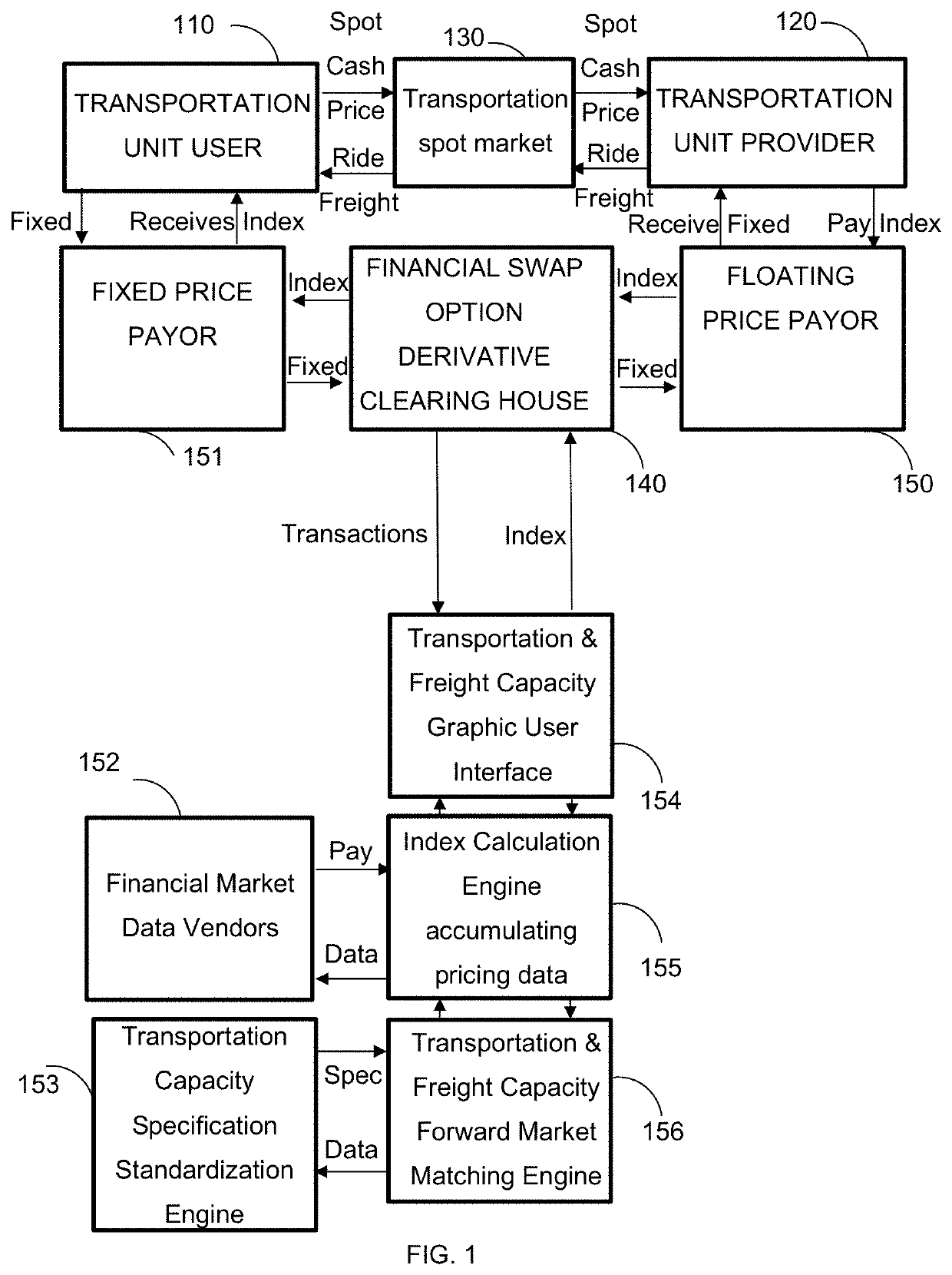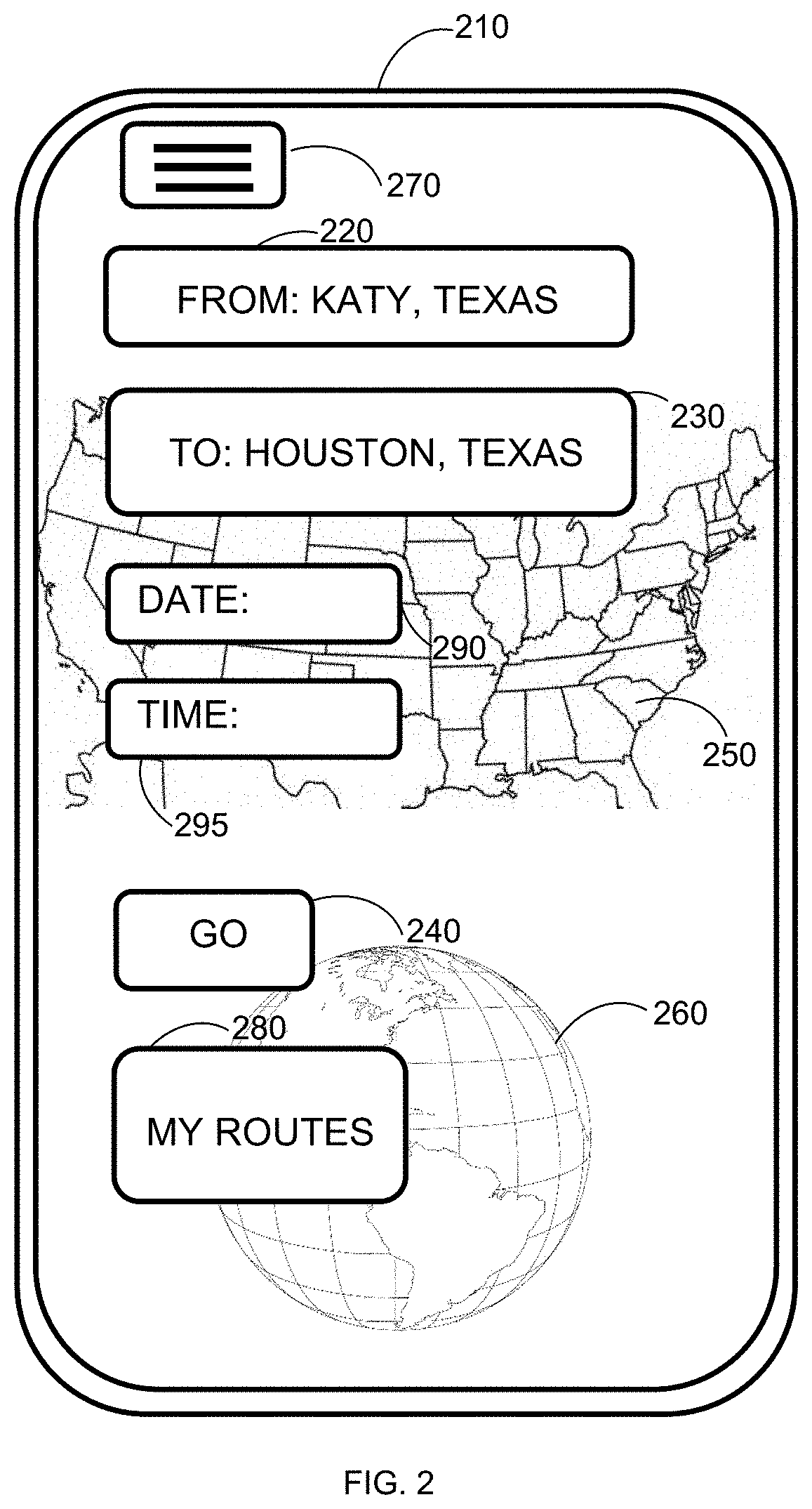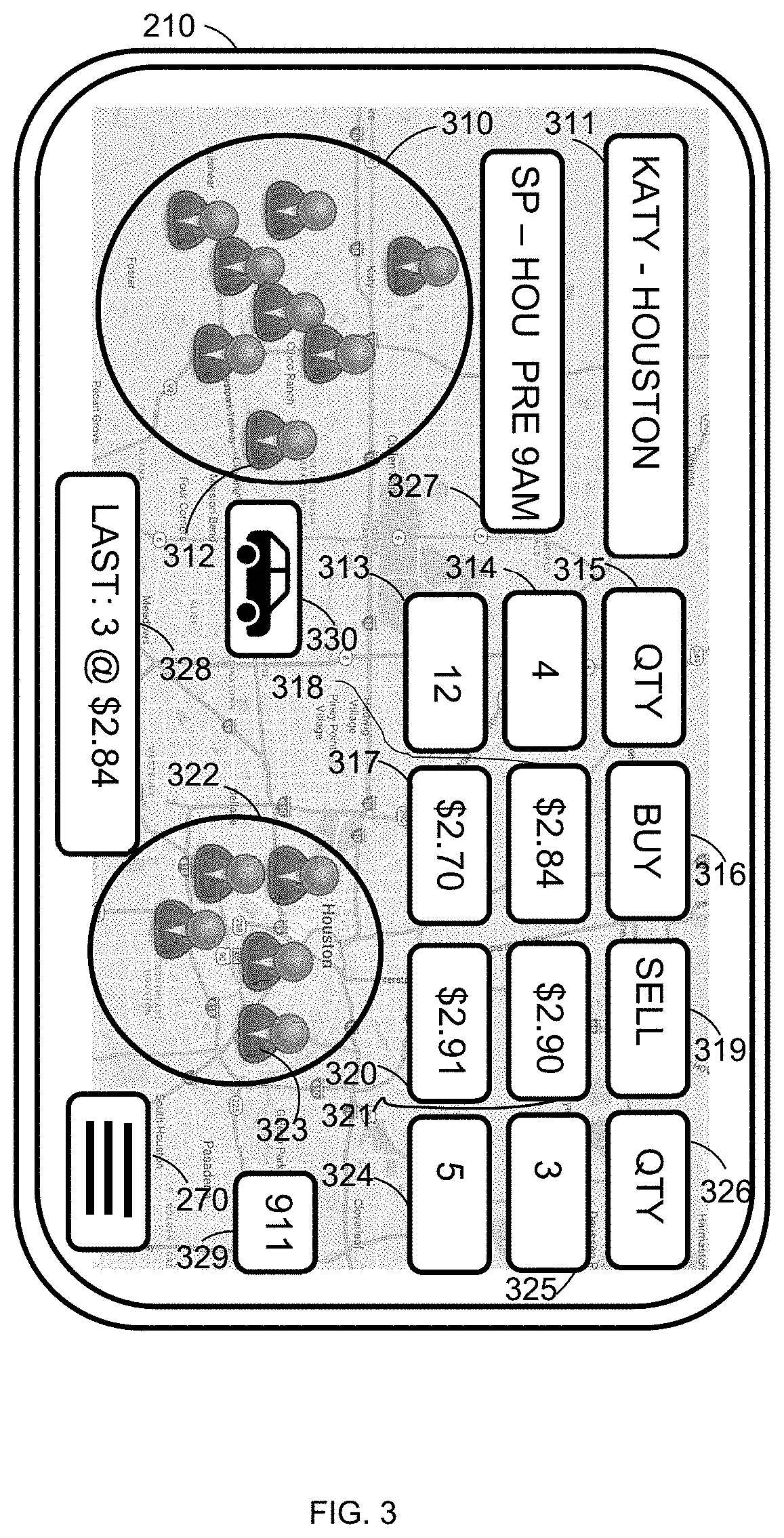Further, most implementations of methods do not allow price discovery between various sellers and buyers of transportation because the systems are disparate and are not open access or transparent.
Transportation Network Company prior art does not contemplate the resale of a transportation unit for the purposes of trading and price discovery and risk management.
While financial loans exist for buying automobiles, no method exists for financial swap payment structures or loans against transportation capacity units such as transportation seat units or transportation trunk space units or any transportation capacity unit.
Additional competing implementations of methods do not allow for forward selling or forward purchasing of transportation seats, freight or capacity beyond a single transaction which a commodity forward market financial swap payment structure and index allows through the systems and methods.
City planners from New York to Austin to San Francisco to Paris to Mumbai to Tokyo to Beijing to Sao Paulo or Johannesburg all struggle to see how the future options of transportation will shape city planning.
City planners have large concerns that when markets move to autonomous cars that cities will still have massive congestion problems if people continue to ride as a single passenger in one car.
Currently, no related art method or system provides a financial swap investment payment structure that would allow investors to invest in decreased congestion in a city, decreased pollution and less wear on the roads which would align state pension goals with city planning goals.
Some alternative methods simply provide loans for transportation vehicles which are a form of financial swap payment structures, but these structures have been proven to add traffic, add single occupancy vehicles (“SOVs”), congestion and wear and tear on roads which actually raise the cost of operating a city or state government.
The aforementioned alternative methods do not allow a free market financial swap payment structure or index mechanism based on open prices to allow any driver of transportation services to move or monetize unused transportation units efficiently.
Additionally, no prior art system or method proposes a technically capable solution of integrating the technical software and hardware requirements for integrating the tasks of a network, GPS system, mobile computing devices, servers, forward commodity markets, financial swap database server and CPU instructions, grouping software for hubs, transparent open access pricing systems, blockchain audit, safety methods and systems, virtual hub systems, algorithms for no arbitrage conditions in a simple easy to use graphical user interface format for mobile or virtual computing over various mediums which are connected via a network.1) U.S. Pat. No. 6,609,103 issued Aug. 19, 2003 to H. Brock Kolls discloses a system of an e-commerce terminal which facilitates incentive-based purchase of one or more products while said user is on said transportation vehicle.
The prior art is incapable of structuring a financial based swap payment structure for transportation units based on both the system elements, inputs and market design of methods and system.
Not only would the system be incapable of measuring the base of a transportation unit, but also not capable of facilitating market based auction transactions from a plurality of users on those transportation units to price a financial swap payment structure on transportation units.
It is very clear the result of the methods and systems of the prior art has contributed to increased congestion and traffic unlike the proposed methods and systems.
The prior art clearly addresses a comparing function to determine the lowest cost route to move from one point to another point however the prior art is completely void of providing an open access transparent forward commodity market for individual capacity units to place the method of a market over the system which would then allow for dramatically lower and more efficient prices and utilization would increase dramatically as supply and demand forces would force the market to balance through price due to the financial swap structure transformation of transportation units.
Accordingly, the prior art is not comparable from a market method and system basis or from an efficiency basis.
For the sake of clarity, the transportation capacity market is exclusively limited to forward physical contracts which means that the contracts are limited to be traded by only those who are actually providing the underlying service or method.
The prior art is limited to a regulated futures exchange which has a clearing house that guarantees the transactions through a highly regulated process.
By contrast forward contracts and financial swaps carry default risks.
The prior art claims limit are limited to futures where there are margin requirements and periodic margin calls by which cash may change hands daily.
A service of the prior art would not be able to group users using a virtual hub pooling server which would then combine with another virtual hub or combination of hubs to make a tradable commodity unit, again therefore rendering the prior art as incapable of delivering or even rendering the service or resulting financial payment structure on that service.
The prior art is technically incapable of providing the software or hardware that would allow for the completion of a transaction between two users in any of the claims.
The issue in the Alice case was whether certain claims about a computer-implemented, electronic escrow service for facilitating financial transactions covered abstract ideas ineligible for patent protection as nothing was fundamentally transformed.
The patents were held to be invalid because the claims were drawn to an abstract idea, and implementing those claims on a computer was not enough to transform that idea into patentable subject matter.
In this specific case, the Supreme court gave a two-step test which McDonough would follow the precedent of Alice in that they are simply borrowing the concept of a futures exchange without a novel technical method or system as to facilitating a transaction and as we clearly present in our arguments, the prior art could not facilitate a transportation futures contract implementation because there is no mobile technology to route riders which renders the implementation non-feasible.
Further there is no specific computer system or unique program which is novel in the implementation other than regurgitating back the business method of a prior art exchange and then applying it to the abstract concept of applying the existing prior art to service contracts.
The clear differences again are that the prior art is not a forward based transportation capacity market which will drive the transportation capacity price to the lowest possible economic level.
Accordingly the prior art does not necessarily lead to the most efficient outcome nor does it mention or lead to a financial swap payment structure based on a forward transportation unit.
Further, the prior art would struggle to stand the light of Alice additionally considering Bilski v. Kappos that the idea of grouping people with GPS is an abstract idea and does not apply to a specific novel example such as the transformation of transportation, transportation units as a commodity, unique transportation contract specifications, uniquely defining transportation capacity as seats or cargo space, calculating financial swap structures on those transportation units, and transportation to define a virtual or actual hub or hub series topology in the context of a forward contract market for transportation and resulting financial swap structure.10) U.S. Patent Application No.
In the United States, 85% of all vehicles ride with a single passenger in the vehicle which is a tremendously inefficient use of energy and it causes high levels of traffic congestion.
Mobile networks have allowed for the rise of Transportation Network Companies that promote hired drivers but the cost of these systems has continued to be expensive for the majority of the public which has held back wide scale adoption.
It has also been proven that transportation network companies have increased traffic and pollution (Fitzsimmons, E., “Uber Hit With Cap as New York City Takes Lead in Crackdown Further, transportation companies.”, Aug. 8, 2018, https: / / www.nytimes.com / 2018 / 08 / 08 / nyregion / uber-vote-city-council-cap.html) rather than reducing traffic and pollution due to incorrect and inefficient methods and systems.
In the specific economic case of transportation and freight movement, there is no open transparent market to make transparent the economic cost of not valuing transportation capacity down to the commodity unit level.
Because the market for transportation is generally valued at the whole vehicle level, not the smaller unit / seat or space level, tremendous inefficiencies exist.
These inefficiencies are for the benefit of large fuel companies, large auto companies and large transportation companies and they are at the expense of the consumer who must buy more transportation units than they need because there is no market for smaller units.
Accordingly, inefficient choices are made which waste a great deal of energy and time.
Most participants in the current economic system simply do not know how their choices affect others in the system, especially that choices in the developed world may affect disproportionately the outcomes for those in the undeveloped world or the wealthy compared to those with fewer resources.
The current system is not linked and therefore sub-optimal economic outcomes are achieved because there are limited governing mechanisms to consider the global group outcome.
No such forward commodity trading auction market has existed for transportation units because the solution to integrate the technical requirements are complex and novel.
No prior art has ever transformed the vehicular transportation capacity on a street into a financial market where the commodity may be traded, physically delivered, swap payments made based on index values, option and derivatives based on indices.
Yet, in all these plans and studies, there has never been a proposal to integrate the power of a transparent marketplace to transformed transportation capacity which elegantly combines technology to make the concept feasible with markets, transportation capacity swaps, transportation capacity derivatives or financial or physical index mechanisms and methods for transportation capacity units.
Further, by definition, there exists no innovative financial swap payment structures or index to incent investors to put capital towards a market which fills empty transportation units in the form of seats, rides or freight units.
Accordingly, the method and systems of prior art are actually making city congestion problems worse, not better.
Shared-use vehicle technology is already here and is advancing but it has been a slow process because there has yet to be an open access transportation marketplace to make transparent the price of a single unit of transportation capacity nor the financial swap payment structure and index incentives to promote the advancement of such methods.
The alternative or status quo has led to urban planning infrastructure expenses that are skyrocketing, flooding from excessive road construction, congestion that has become unmanageable in most urban areas, escalating pollution and resulting health care costs, increased vehicular deaths from congestion and excessive costs at the consumer level which can be reduced significantly.
 Login to View More
Login to View More  Login to View More
Login to View More 


